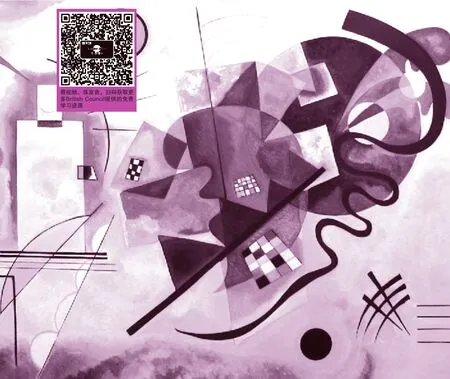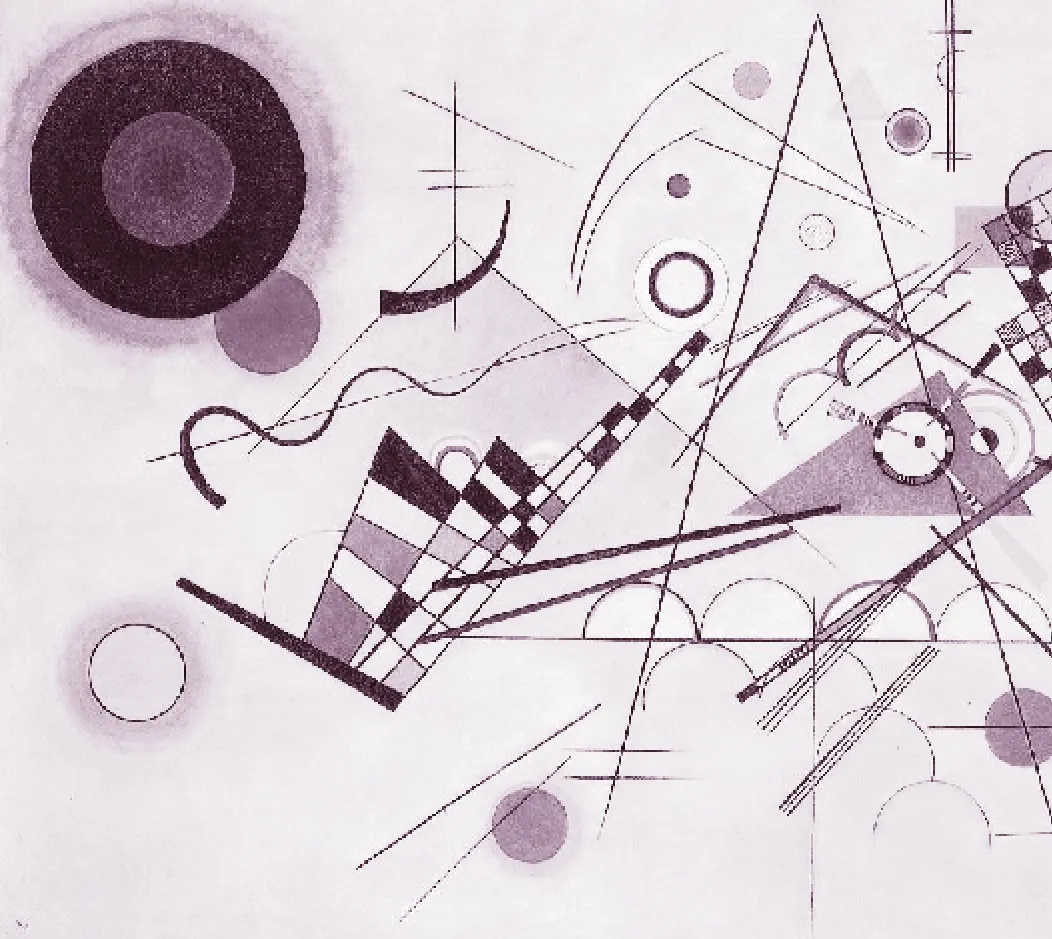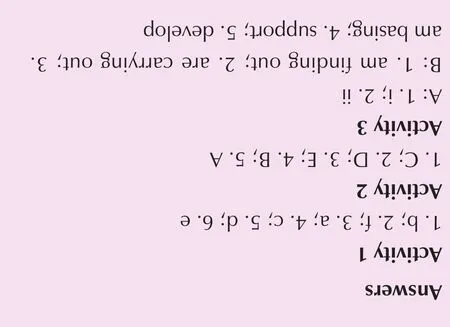Increase Your IQ and Your Memory:Learn Synaesthesia 利用“联觉”提升智商及记忆力
2017-11-10
Increase Your IQ and Your Memory:Learn Synaesthesia 利用“联觉”提升智商及记忆力
Activity 1
Before you read, match the word to a definition.

1. a study 2. be responsible for something 3. benefit 4. technique 5. test 6. train
a. a good thing
b. a piece of research
c. a way of doing something
d. check an idea to find out if it is true
e. learn something; teach someone something
f. make something happen

Some creative people see colours when they hear different sounds. Others see colours when they see words and numbers printed in black and white. These interesting people are called synaesthetes[联觉者], and what they experience is called synaesthesia.
A
A study at the University of Sussex is finding out how learning to see sounds as colours or think of letters in colour could improve your IQ and memory.
Study leaders Dr. Daniel Bor and Dr. Nicolas Rothen have been working on memory for a number of years. They want to see which parts of the brain do different jobs.Dr. Bor says that carrying out these tests has given them the opportunity to find out more about how we use different kinds of memory.
B
He explains that Professor Simon Baron Cohen, of the University of Cambridge, was largely responsible for beginning the modern science of synaesthesia in the 1980s. “He created a test to try and find out whether the experiences that synaesthetes have are the same over time. The tests showed that synaesthesia was real, and this made lots of scientists in different places want to do similar research. They wanted to know what synaesthesia is, what different kinds there are, and what creates it in the first place.”
C
Dr. Bor based his latest research around something scientists already know a lot about:chunking[组块化]. He explains that this is a way of breaking large pieces of information into smaller units, to make it easier to remember.“When I give you my phone number,01274737215, you probably remember it as 012 74 73 72 15, or something similar. If you can remember 012 and the first 74, you can remember the rest. You can get some amazing benefits from chunking.”

This is really important for understanding synaesthesia. Dr. Bor says that synaesthesia adds extra information to things that are difficult to remember, such as letters and numbers, or extra colours. This helps us remember things better.
When Dr. Bor first started talking about this topic 12 years ago, other experts were interested, but at the time there was no supporting research. Now that has changed.There have been other studies showing the memory advantages of synaesthetes. And Dr. Bor’s own study of one amazing person,who has both synaesthesia and a very strong memory advantage, supports this idea as well.
D
“All these signs are pointing towards synaesthesia being connected to greater abilities to do certain things, certain jobs,”says Dr. Bor. “So, the study began as a way to test that.” They wanted see if they could create a way to learn synaesthesia, and develop those benefits for everyone.
They developed the study from an idea by Dr. Nicolas Rothen who had trained people for ten minutes a day for a week.The results were not huge, but they were interesting. “My idea was to train them for a lot longer, and make the experience really interesting and enjoyable, so they would want to learn more and more,” says Dr.Bor. “I knew exactly how I wanted to teach them, to get the biggest benefits. We used those ideas in the study and we did see strong benefits.”
E
They discovered that, after training,people were able to pass the normal synaesthesia tests, and their IQ jumped up about 12 points! Although Dr. Bor says they need to test the increase in IQ with different groups of people, the result is very interesting. “It’s very rare to read about a study which increases people’s IQs.Especially when the group are already quite clever, like the students who took part in this study.”
As Dr. Bor says, “Synaesthetes, on the whole, are really pleased and proud that they are synaesthetes. They get a memory advantage and they see the world in this extra special way.”

Activity 2
The text has five parts labelled A–E. Match the headings below to the paragraphs.
1. Information Chunking
2. Training in Synaesthesia
3. Amazing Results
4. The Beginning of a Science
5. Studying Memory
Activity 3
A. Which sentence is about…?
1. something happening now
2. something that is generally true
i. A study at the University of Sussex is finding out how to improve your IQ and memory.
ii. Synaesthesia adds extra information to things.
B. Choose the correct verb form in bold.
1. I’m doing an interesting project. I am finding out/find out how people remember phone numbers.
2. They are carrying out/carry out a lot of memory tests at the moment.
3. I am basing/base my research on an idea I had when I forgot my own phone number.4. Our results are supporting/support their ideas.
5. We are developing/develop a number of tests each year.
Activity 4
Discussion: Do you know
anyone with synaesthesia? If you could have any kind of synaesthesia, what kind would you choose?

无论是中文写作还是英文写作,无论是学生练笔还是专业论文,“烦琐”是人们很容易犯下的通病。我们经常接触到各种多余累赘的文字、拐弯抹角的句子、华而不实的修饰和毫无意义的套话。这些语言上的毛病虽然在日常生活中不会对沟通交流造成太大障碍,但是一旦出现在考试作文、期末论文或者其他重要文稿当中,它们就会成为影响文章质量的头号敌人。
以英文写作为例,为什么那么多作者在明明可以只用一个介词的情况下非要用个复杂的词组呢?其中原因有很多,有时是因为作者最近学到的新内容,有时是在故意“抖机灵”,有时是因为无话可说只好这样凑字数,有时是为了“显摆”自己的语言水平,还有些时候则是为了讨老师或读者的欢心。
事实上,对大部分读者而言,用思路清晰的文字把自己的意思准确无误地表达出来,远比不知所云的繁杂琐碎更有吸引力——而对阅卷时间有限的老师来说,一语中的、不拐弯抹角的作文显然更易让人产生好感。
那么我们应该如何去繁从简呢?拿起一篇自己的习作,检查每个句子——每个词都是必要的吗?有没有多余的介词、意思重复的副词和形容词、没有意义的插入语?这句话是不是和上文的意思有所重复?这句话是不是和文章内容无关?这句话能用更简单的语言表达吗?全文还有什么华而不实、做作时髦的地方吗?
从小处开始,从最基础的课堂作业开始,通过这样的检查一点点纠正自己的写作习惯。只要坚持不断地练笔、检查和修改,你的文章就会在不知不觉中产生可喜的质变。
一句话:简洁,再简洁。
(石蕴 供稿)
